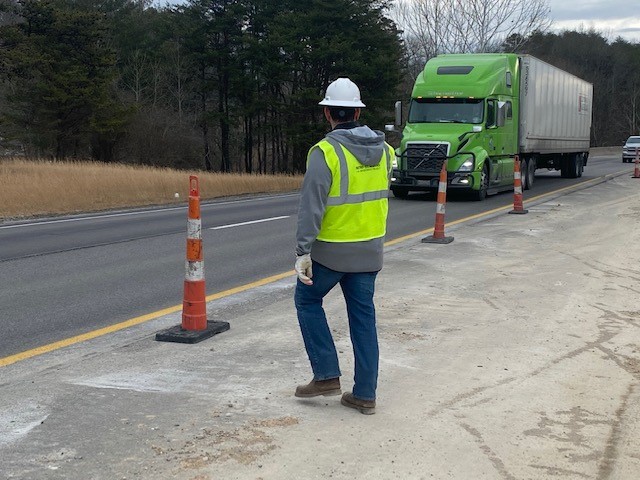A flagger working for A.L.L. Construction Inc. was killed in a work zone accident on US 340 in Jefferson County according to a press release from the West Virginia Department of Transportation (WVDOT).
The flagger had stopped traffic on the US 340 widening project a little before 10 a.m. on Thursday, April 4, 2024, when another car drove up to the work zone at a high rate of speed. The driver swerved toward the embankment to miss the stopped traffic, but struck the flagger, trapping her underneath the car.
Bystanders lifted the car off the flagger, but she died on the way to the hospital.
“I’m very sad for the family and our partner, A.L.L. Construction,” said Transportation Secretary Jimmy Wriston, P.E. “It’s so senseless that we can’t seem to make better choices when we get behind the wheel of our automobiles.
“I implore all drivers to please lay down your cell phone, stay focused, and obey all the rules of the road, especially in the many work zones around the state,” Wriston said.
“We send our condolences to her family and her co-workers,” said J.W. Hawk, project manager for A.L.L. Construction. “They’re just out there trying to do their jobs.
“The traveling public really needs to pay attention when there are work zones,” Hawk said. “They need to slow down and pay attention, and adhere to all signs.”
Five people were killed in work zone crashes in West Virginia in 2023. The WVDOT is working together with its contracting partners, and law enforcement agencies to prevent work zone crashes.
On Thursday, March 14, 2024, a WVDOT worker was struck and badly injured at the scene of an accident in Clarksburg. On Friday, March 29, 2024, a WVDOT worker was patching potholes on Interstate 79 when a driver drove through the work zone and struck him. His injuries were minor.
